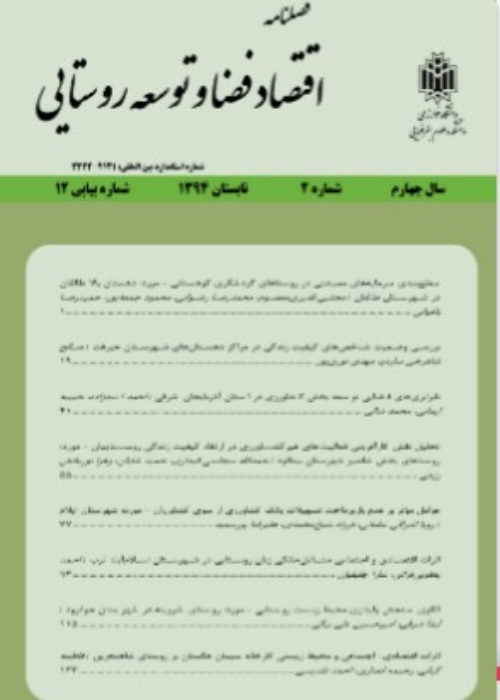Climatic feasibility of walnut planting in Rural lands of Ardabil province
Proper land use requires knowledge of environmental power, and then knowledge about environmental capacity in management and economic planning, along with their protection, will bring economic growth and development. Therefore, there is a close and undeniable connection between the environmental capacity of an area and its function. The assessment of environmental capacity is based on the indicators appropriate to the type of zoning and mathematical rules. It aims to adjust the land use according to the region's characteristics to promote economic goals and preserve the environment.Climatic and natural conditions are essential factors in the production and determination of plant species, and land use depends on the quality of these factors. Parameters such as temperature, precipitation, and humidity are crucial for the growth and development of different trees, including the walnut tree. The walnut tree is deciduous, large and wide from the broad-leaved group belonging to the Juglandaceae family and the Juglans genus with 21 species. The quantitative and qualitative characteristics of the walnut tree, such as wood, bark, leaves, and kernels, make it possible to use it in various industries such as soap making, paper making, wood and furniture industry, oil wells, oil extraction, pharmaceuticals, medicine, and dyeing, nutrition, purification of heavy metals from water and cleaning of soft metals, bulking of adhesives, with commercial and economic purposes. Therefore, the planting of this type of plant in susceptible rural areas, according to the 20-year vision document, in which special attention is paid to non-oil exports, including agricultural products, its export improves foreign exchange earnings and the economic growth of the villages. Therefore, considering the forestry value (wood value) and the edible seeds, the creation of uniform orchards of walnut trees requires the assessment of the capability of the regions according to the environmental components.
The research method is based on the objectives of applied research and is descriptive-analytical. In this research, the desired data was collected from the organizations and scientific centers of the Ardabil province from 2007 to 2020. Then, after collecting and sorting, digitization was done, and finally, the layers were combined with the fuzzy coefficient operator model. Furthermore, the final map was obtained in 4 categories: desirable, suitable, relatively suitable and unsuitable in the GIS environment.
Even though the high sensitivity of the walnut tree to maximum wind speed and temperature thresholds (during the growth period and at the time of fruit ripening), the temperature is not considered a limiting factor for the planting of walnut trees in the province villages. The study of the average relative humidity of the air indicates that except for the villages of Pars-Abad and Bileh-Swar, Ardabil, the rest of the places are favorable and ideal for the growth of walnut trees. The investigation of the rainfall situation in Ardabil Province showed that the experts should supervise the planting of walnut due to the inappropriate amount of rainfall in Sarein, Nemin, Pars-Abad, and Ardabil.Gardening at heights above and below sea level, such as Sablan, Talesh, Ghoshe-dagh, Bezghosh, Ag-dagh and Jalga Maghan mountains in Ardabil province, is a limiting factor in the planting of walnut trees. When planting at altitudes lower than 1500 meters above sea level, it is better to use species such as Chandler and Howard. For altitudes higher than 1500 meters above sea level, it is better to use Fernor species. The slope is not a limiting factor for the planting of walnut in the villages of this province, except in parts of Meshkinshahr, Ardabil, Khalkhal and Kausar. The final zoning map indicated that the areas with almost mild winters and dry summers, annual rainfall, relative humidity and moderate to good wind speed had a high potential for planting walnut orchards. According to the final map, of 17,824.6 square kilometers of Ardabil province, 7,773 square kilometers are favorable areas (43.60 percent), 4,681.6 square kilometers are suitable (26.28 percent), 4,809.3 square kilometers are relatively suitable (26.98 percent), and 560.7 square kilometers are unsuitable (3.14 percent). Regarding geographic location, the ideal and favorable lands for walnut planting include the northern, central and eastern parts of the province, which includes 43% of the province.
- حق عضویت دریافتی صرف حمایت از نشریات عضو و نگهداری، تکمیل و توسعه مگیران میشود.
- پرداخت حق اشتراک و دانلود مقالات اجازه بازنشر آن در سایر رسانههای چاپی و دیجیتال را به کاربر نمیدهد.



